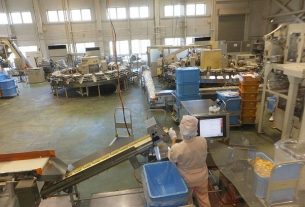Running a successful restaurant goes beyond serving delicious food and providing excellent service. It also requires maintaining a clean and hygienic environment for both staff and customers.
In this article, we will explore essential strategies for effective restaurant cleaning to ensure a safe and pleasant dining experience.
Creating a Cleaning Schedule
A well-structured cleaning schedule is the backbone of maintaining cleanliness in a restaurant. It helps ensure that all areas are cleaned regularly and no cleaning tasks are overlooked. Determine the frequency of cleaning for different areas, such as the kitchen, dining area, restrooms, and storage spaces. Assign specific responsibilities to staff members to ensure accountability.
Essential Cleaning Supplies and Equipment
Equipping your restaurant with the necessary cleaning supplies and equipment is crucial for efficient and thorough cleaning. Stock up on cleaning agents, disinfectants, degreasers, and sanitizers suitable for different surfaces. Invest in appropriate cleaning tools like mops, brooms, brushes, microfiber cloths, and vacuum cleaners to facilitate effective cleaning.
Kitchen Cleaning Tips
The kitchen is the heart of any restaurant and requires meticulous cleaning to maintain food safety and hygiene. Emphasize proper food handling and storage practices to prevent contamination. Regularly clean and sanitize kitchen surfaces, countertops, cooking equipment, and utensils. Implement a system for cleaning kitchen exhaust systems to prevent grease buildup and maintain air quality.
Dining Area and Front-of-House Cleaning
A clean and inviting dining area is essential for creating a positive impression on customers. Develop procedures for cleaning tables, chairs, and other seating areas between customers. Pay special attention to high-touch surfaces like menus, door handles, and condiment containers. Maintain spotless restrooms by regularly cleaning and restocking supplies.
Back-of-House Cleaning
While not directly visible to customers, back-of-house areas like storage rooms, employee break rooms, and offices require regular cleaning and organization. Establish guidelines for cleaning storage areas to prevent clutter and ensure proper food rotation. Maintain cleanliness and hygiene in employee break rooms and facilities to support a healthy work environment. Implement proper trash disposal and recycling practices.
Addressing Special Cleaning Challenges
Restaurants often face unique cleaning challenges such as grease and oil buildup, stubborn stains, and pest control. Develop specific procedures for tackling these challenges. Use appropriate cleaning agents and techniques to remove grease and oil from kitchen surfaces. Train staff on stain removal techniques for different types of stains. Implement pest control measures to prevent and address pest infestations.
Training and Education
Proper training of staff members in cleaning procedures is essential to maintain consistency and efficiency. Provide comprehensive training on cleaning protocols, including the use of cleaning agents, proper techniques, and safety guidelines. Regularly reinforce training through refresher sessions and ongoing education to stay updated on best practices.
Hiring Professional Cleaners
Although restaurant staff are responsible for day-to-day cleaning, it is often beneficial to hire professional cleaners on a regular basis. Professional cleaners can provide specialized services such as deep cleaning, steam cleaning, and carpet shampooing that may not be feasible with in-house staff.
Aside from general cleaning services, you may also consider professional restaurant hood cleaning services in New Jersey or elsewhere to ensure proper maintenance of kitchen exhaust systems. This helps reduce fire hazards and maintain air quality while keeping the kitchen clean and safe for employees and customers.
Monitoring and Quality Control
Establish a system for monitoring cleanliness standards and conducting regular inspections. Assign responsible individuals to perform inspections and provide feedback to staff members. Promptly address any cleanliness issues and implement corrective actions. Encourage open communication and create a culture of cleanliness and accountability.
Now that you know the basics of restaurant cleaning, you’re ready to create effective policies and procedures for your own establishment. Keep these tips in mind and customize them to suit your specific needs. With proper care and maintenance, you can ensure a safe and healthy environment for all customers and staff members.
Do you have any other tips or suggestions for restaurant cleaning? Share your thoughts in the comments below!




